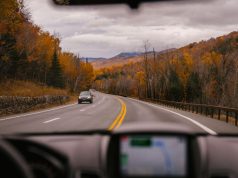Few experiences rival the awe of gazing up at a pristine night sky free from light pollution. Whether you’re an amateur astronomer, a passionate photographer, or simply seeking a moment of cosmic reflection, the right destination can transform a simple camping trip into an unforgettable celestial adventure. In this guide, we’ll explore ten of the best stargazing spots around the world, share tips for planning your visit, recommend essential gear, and offer photography advice to help you capture the beauty of the universe in all its glory. Pack your tripod and telescope—your journey to the stars begins here.
1. Atacama Desert, Chile
Situated at an elevation of over 2,400 meters above sea level, the Atacama Desert boasts some of the clearest skies on Earth. Its arid climate and minimal cloud cover translate to more than 300 clear nights per year. Visit the ESO’s La Silla Observatory or join a guided night tour to learn about constellations, planets, and nebulae. The desert’s salt flats and rugged terrain make for dramatic foregrounds in astrophotography, ensuring your images will stand out.

2. Namib Desert, Namibia
The Namib Desert is home to the NamibRand Nature Reserve, Africa’s first Dark Sky Reserve. With protections in place to eliminate light pollution, the reserve boasts spectacular views of the Milky Way, zodiacal light, and shooting stars. Camp beneath towering red dunes or stay in luxury eco-lodges with glass-roofed rooms designed for stargazing. Local guides can show you how to spot Southern Hemisphere constellations like the Crux (Southern Cross).

3. Kiruna, Swedish Lapland
Above the Arctic Circle, Kiruna offers a unique combination of northern lights and starry skies during the winter months. When conditions align, you can watch vibrant auroras dance across the heavens overhead. During the summer’s midnight sun, stargazing takes a back seat, but winter brings long, nights that are perfect for astronomy. Combine your trip with a stay in an ice hotel or a husky sledding excursion for a truly memorable adventure.
4. Mauna Kea, Hawaii, USA
At 4,207 meters above sea level, the summit of Mauna Kea is one of the world’s leading astronomical research sites. Several observatories harness the mountain’s stable atmospheric conditions to peer into deep space. While public access to the summit requires a 4×4 vehicle and acclimatization to the elevation, lower-altitude visitor centers offer nightly stargazing programs with powerful telescopes and expert guides.

5. Big Bend National Park, Texas, USA
Spanning over 800,000 acres along the Rio Grande, Big Bend is recognized as an International Dark Sky Park. Its remote location and rugged terrain virtually eliminate light pollution, making it ideal for backyard astronomy. The park hosts astronomy festivals and moonlight walks, allowing visitors to learn about celestial navigation, telescope operation, and solar system exploration under native cowboy-starry skies.

6. Jasper National Park, Canada
Jasper was the first Dark Sky Preserve in North America and is celebrated for its pristine high-altitude vistas. From fall through spring, park rangers lead free nightly astronomy programs at the Patricia and David Thompson Astronomical Observatory. With peak seasons during meteor showers like the Perseids and Leonids, you’ll have ample opportunity to spot shooting stars against a backdrop of the Milky Way.
7. Aoraki/Mount Cook National Park, New Zealand
Home to some of the darkest skies in the Southern Hemisphere, Aoraki/Mount Cook National Park provides unobstructed views of the Milky Way’s central bulge. The Aoraki Mackenzie International Dark Sky Reserve covers over 4,300 square kilometers, ensuring minimal light interference. Take a nighttime tour aboard a star vessel cruise or join a guided hut-to-hut trek to experience the cosmos from remote alpine lakeshores.
8. Torres del Paine National Park, Chile
Famed for its jagged granite peaks and turquoise lakes, Torres del Paine also offers an exceptional canvas for night-sky viewing. During the fall and winter, the park’s high latitude ensures long, dark evenings that are ideal for stargazing. Set up camp at Valle Francés or Puerto Natales, and be prepared for rapid weather changes—clear windows appear unexpectedly, rewarding patient sky-watchers with brilliant celestial shows.
9. Wadi Rum, Jordan
Also known as the Valley of the Moon, Wadi Rum’s vast desert landscape and Bedouin camps provide an otherworldly setting for stargazing. Without modern lighting, the night sky bursts with stars, while the moon casts dramatic shadows on sandstone formations. Many camps offer traditional dinners around a campfire, followed by storytelling under the star-studded canopy—a perfect blend of culture and astronomy.
10. Death Valley National Park, USA
As one of the hottest places on the planet by day, Death Valley transforms into a stargazer’s paradise by night. Its remote location and Protected Night Sky status mean that light pollution is virtually nonexistent. Head to Mesquite Flat Sand Dunes or Badwater Basin for wide-open horizons. Check park schedules for Night Sky Programs and special viewing events during significant celestial occurrences.
Planning Your Stargazing Adventure
Choosing the right time and location is crucial for a successful stargazing trip. First, research seasonal weather patterns and moon phases—new moon periods offer the darkest skies. Check local sunrise and sunset times to plan your setup. When packing, include layered clothing to stay warm during chilly nighttime temperatures, and verify any permit requirements or park closures. Booking guided tours or staying in official dark sky reserves can enhance your experience by providing expert insight and specialized equipment. For more tips on organizing every detail, consider this as part of your ultimate Travel Planning Guide to unforgettable stargazing adventures.
Essential Gear for Stargazing
Investing in quality gear will significantly improve your stargazing comfort and observational capabilities. A sturdy tripod is essential for stable setups of telescopes or cameras. Bring a wide-aperture telescope or binoculars with a magnification between 7x and 10x for deep-sky objects. A red-light flashlight helps preserve night vision while reading star charts or adjusting settings. Don’t forget extra batteries, a comfortable chair or reclining pad, and a weather-resistant blanket or ground mat.
Tips for Capturing the Night Sky
Astrophotography requires patience and experimentation. Use a camera with manual controls and a lens with a wide aperture (f/2.8 or lower). Set your ISO between 800 and 1600, and experiment with exposure times from 15 to 30 seconds to balance star trails and sharpness. Utilize a remote shutter release or intervalometer to reduce vibrations. Compose your shot with interesting foreground elements like rock formations, silhouettes, or reflections on water. Post-process in software like Lightroom or Starry Landscape Stacker to enhance contrast and minimize noise.
Conclusion
Exploring the cosmos from Earth’s most remote corners is a transformative experience that combines adventure, science, and natural beauty. From the deserts of Chile and Jordan to the icy landscapes of Swedish Lapland, each destination offers unique perspectives on our place in the universe. With careful planning, the right gear, and a dash of patience, you can witness celestial wonders that few ever get to see. So set your sights skyward and embark on a starlit journey you’ll never forget.







